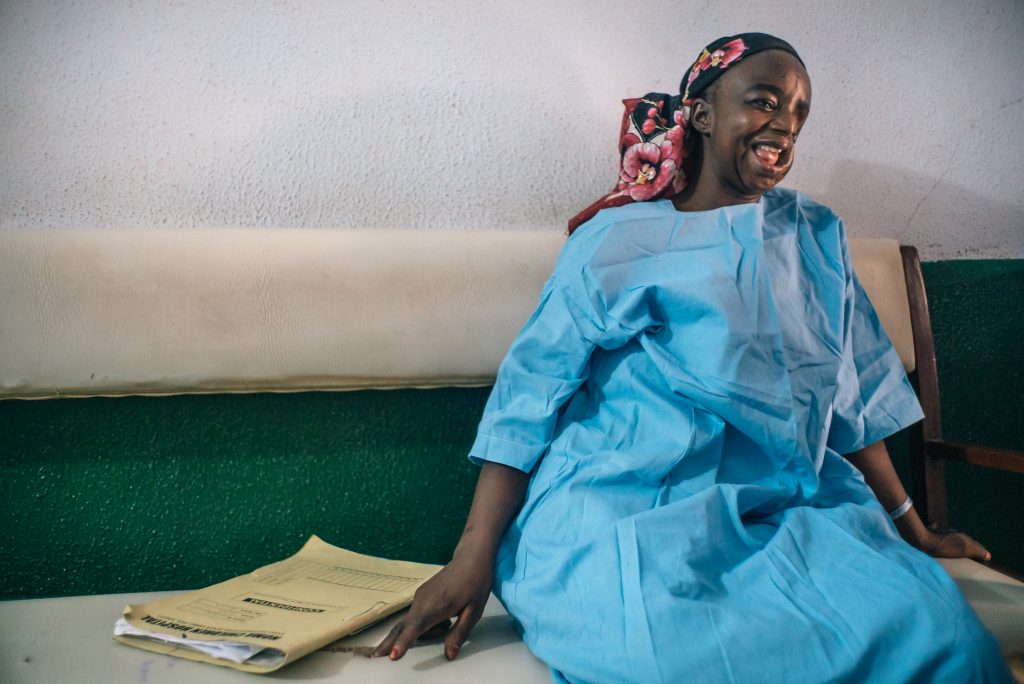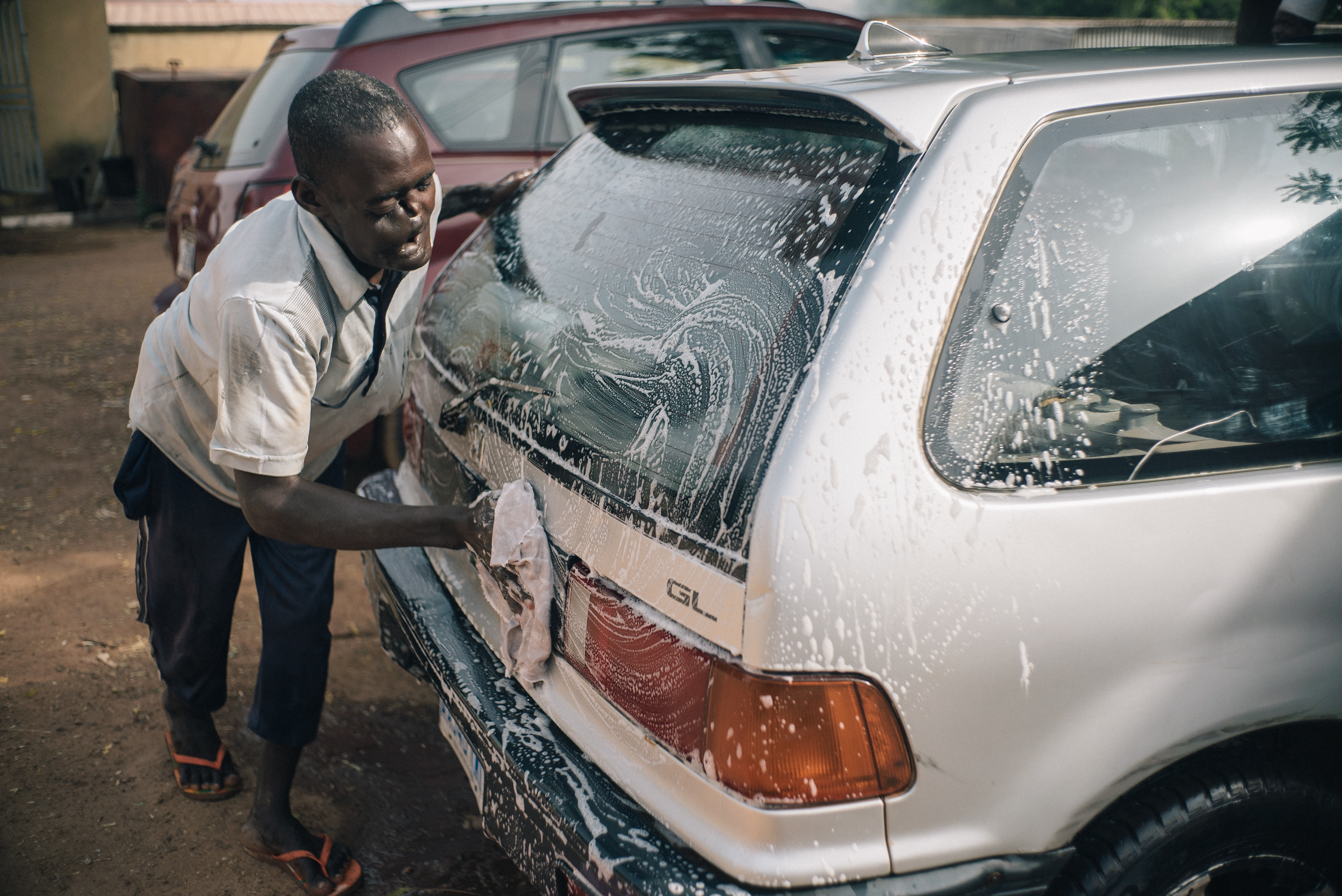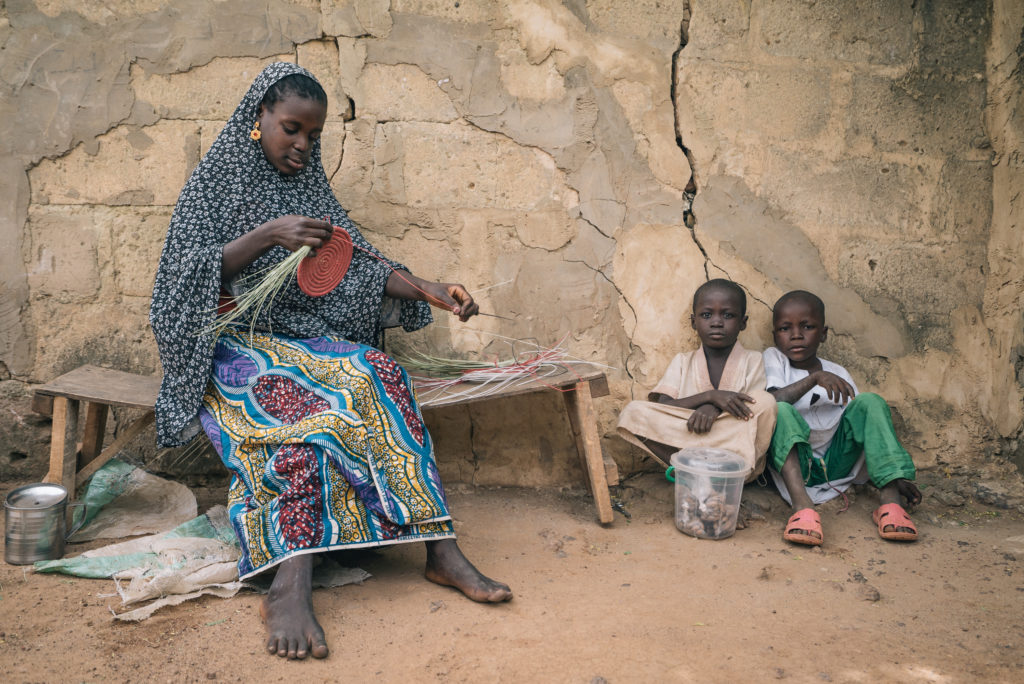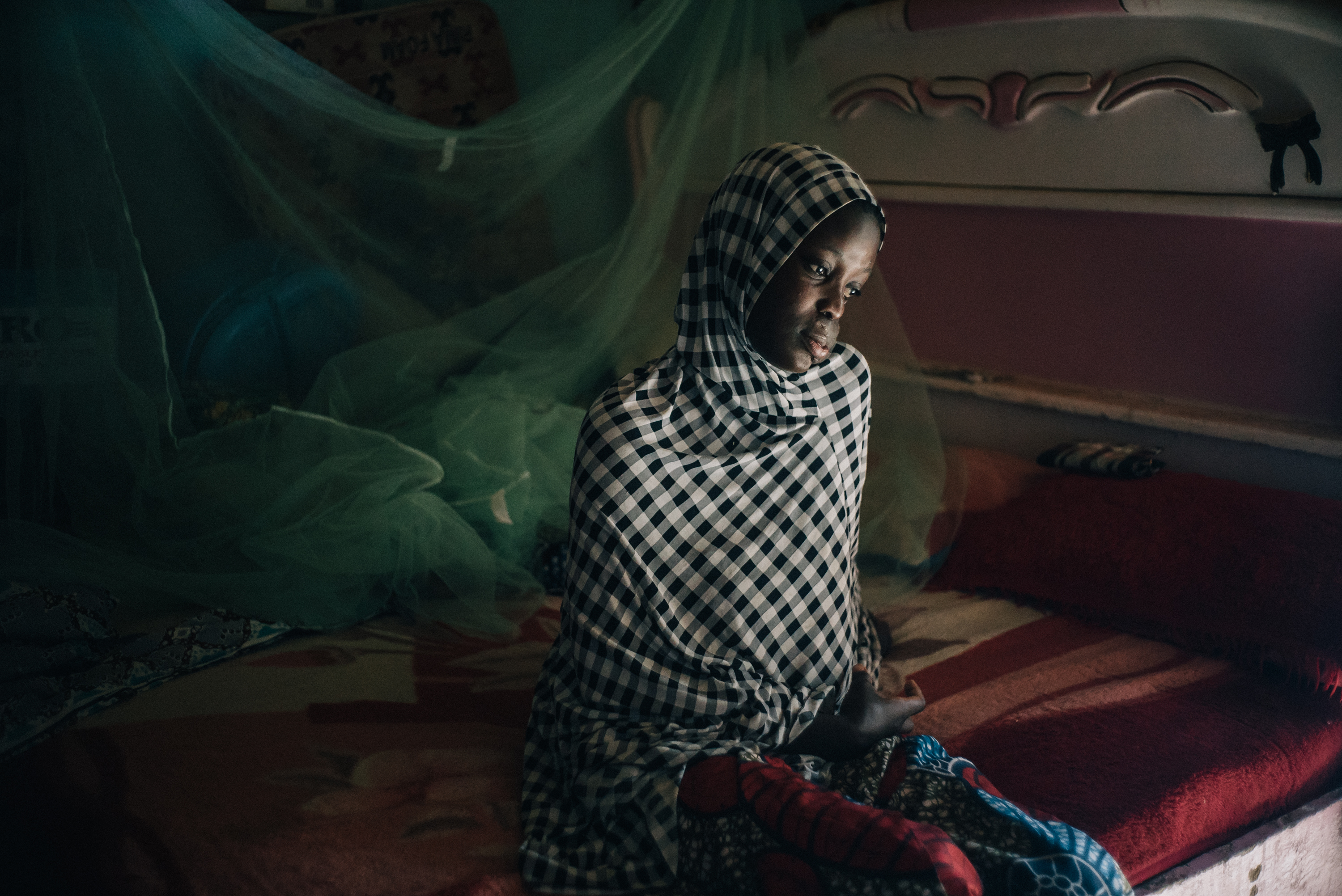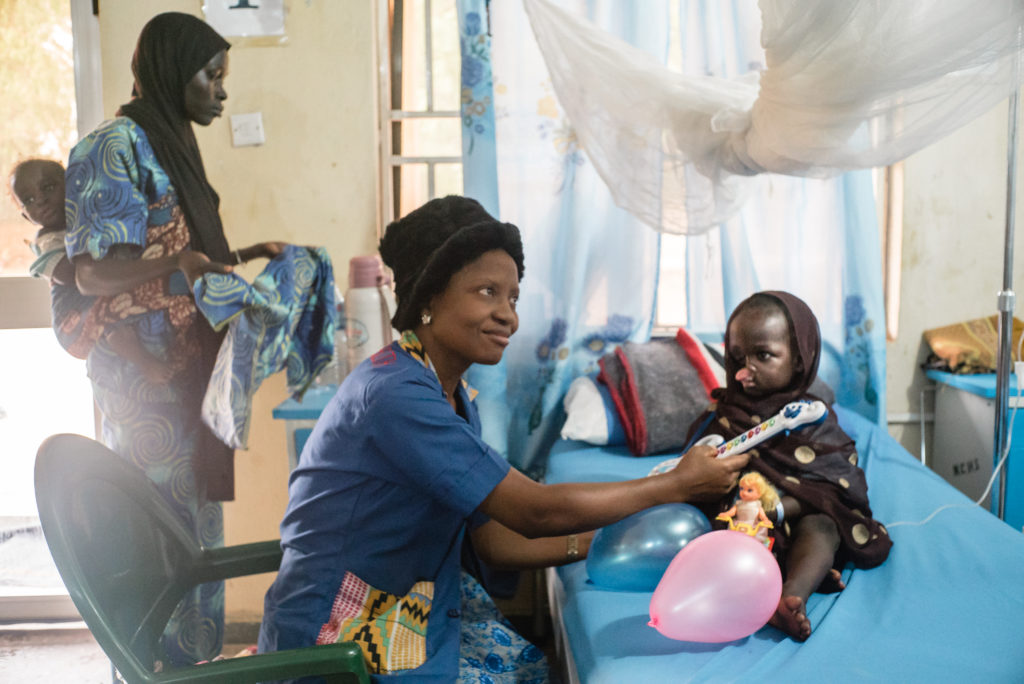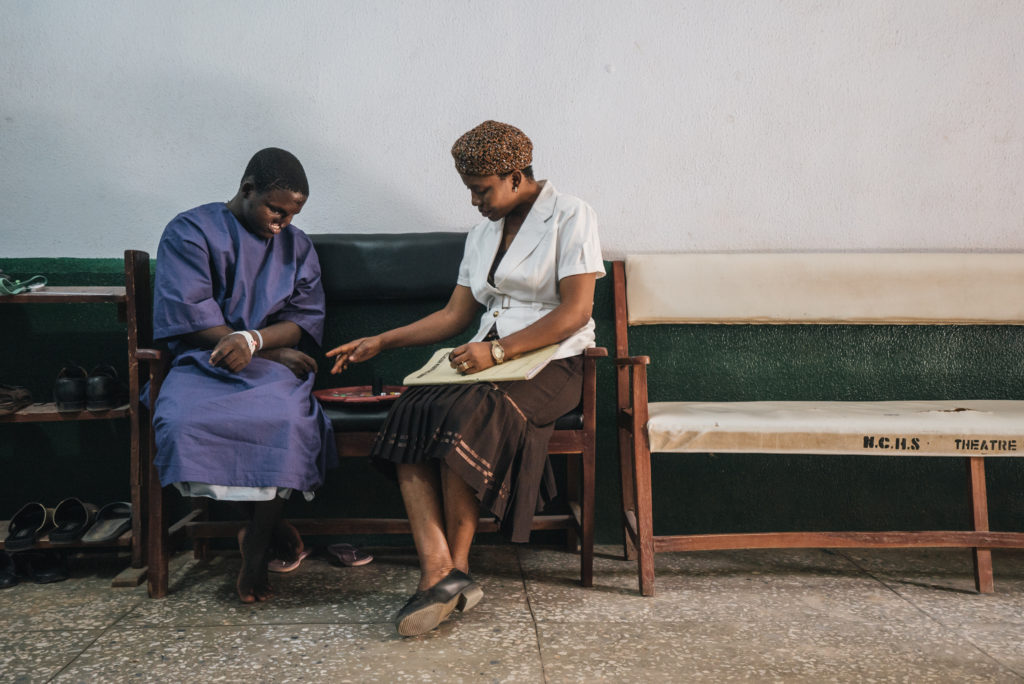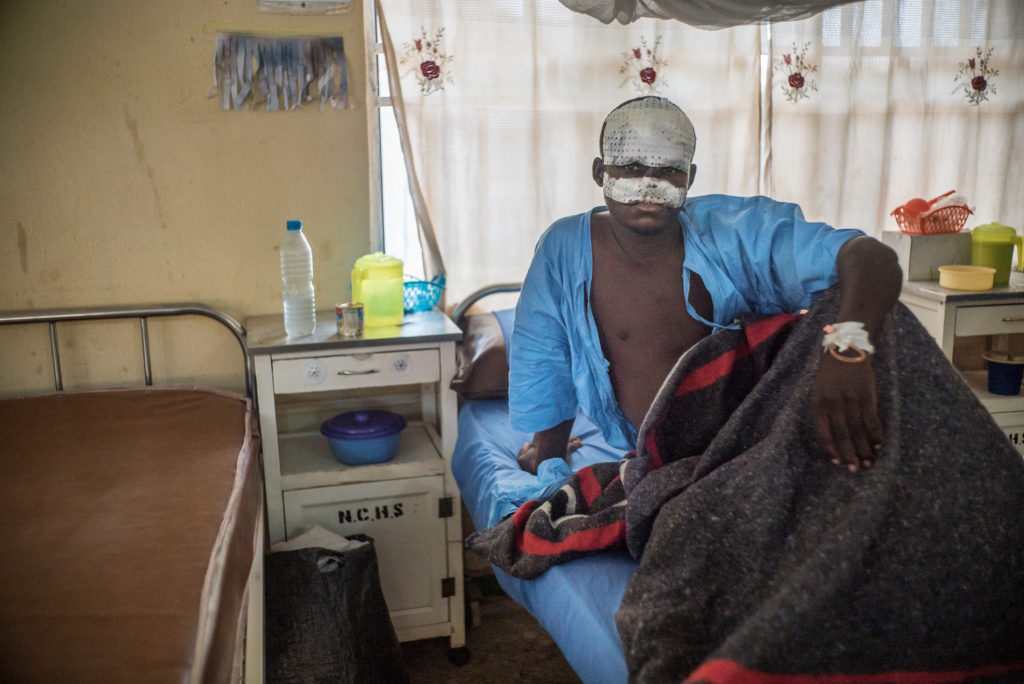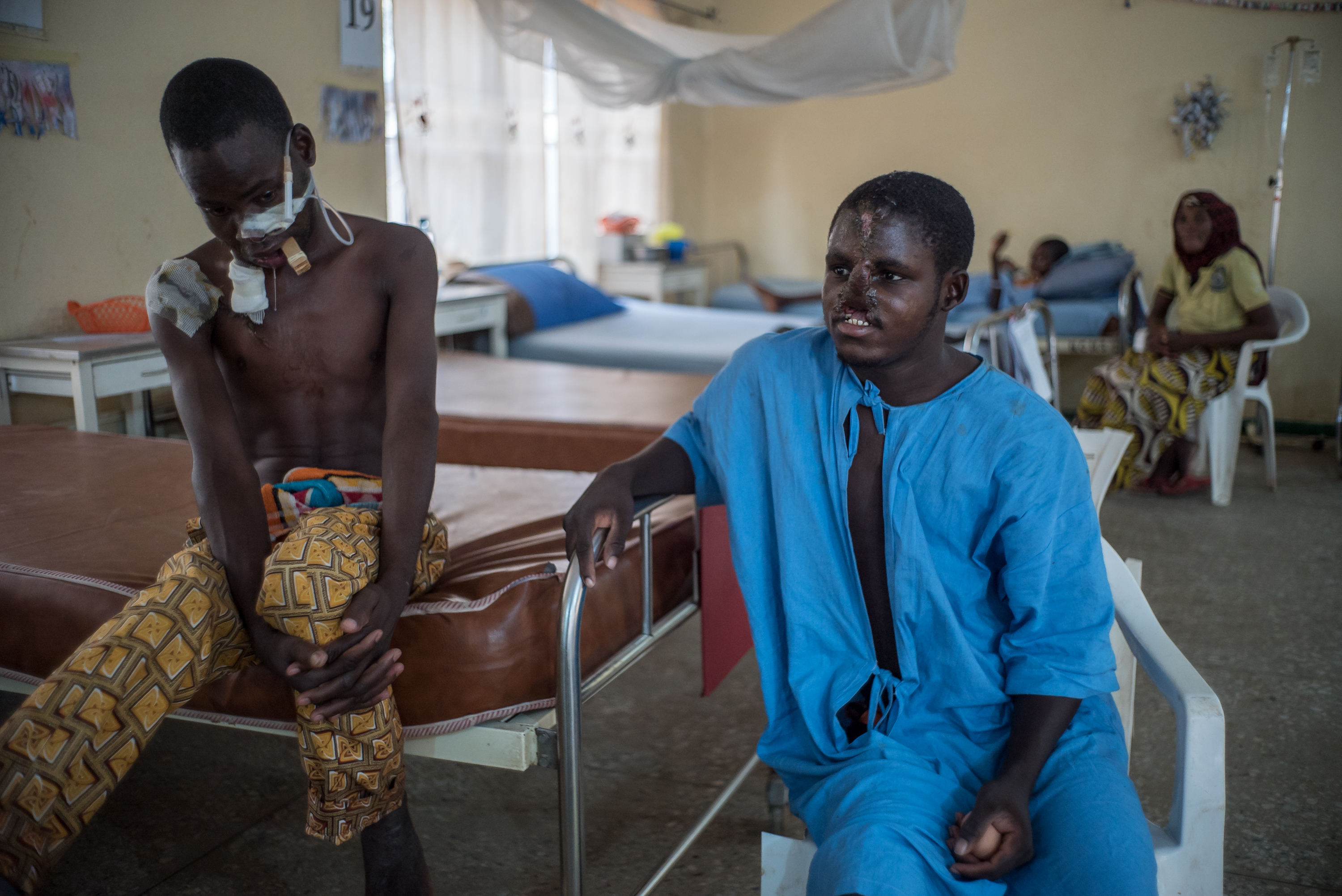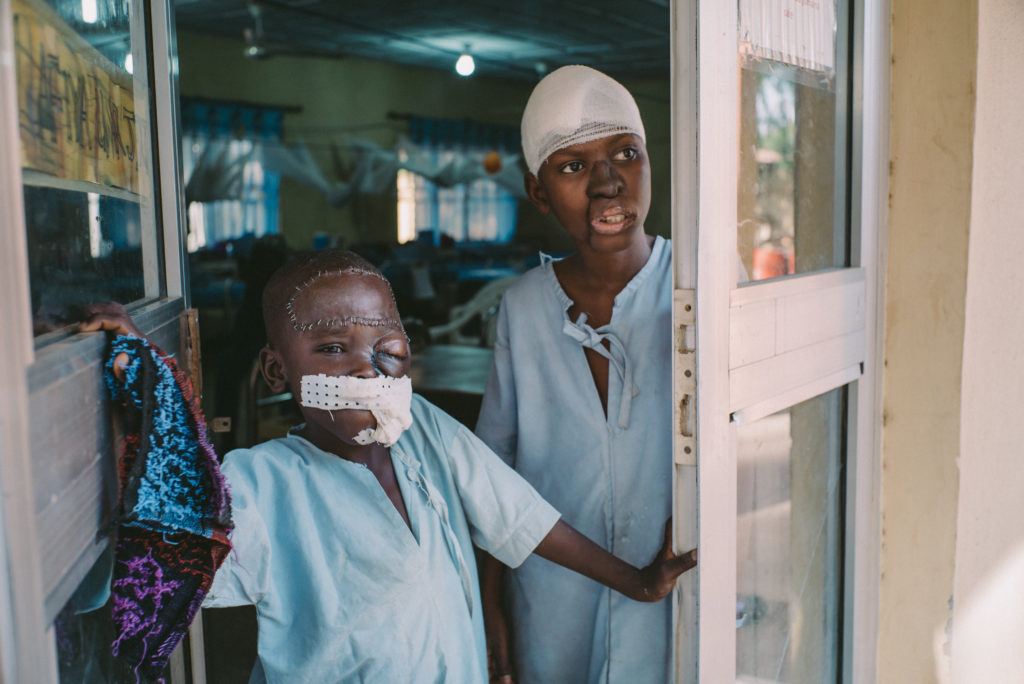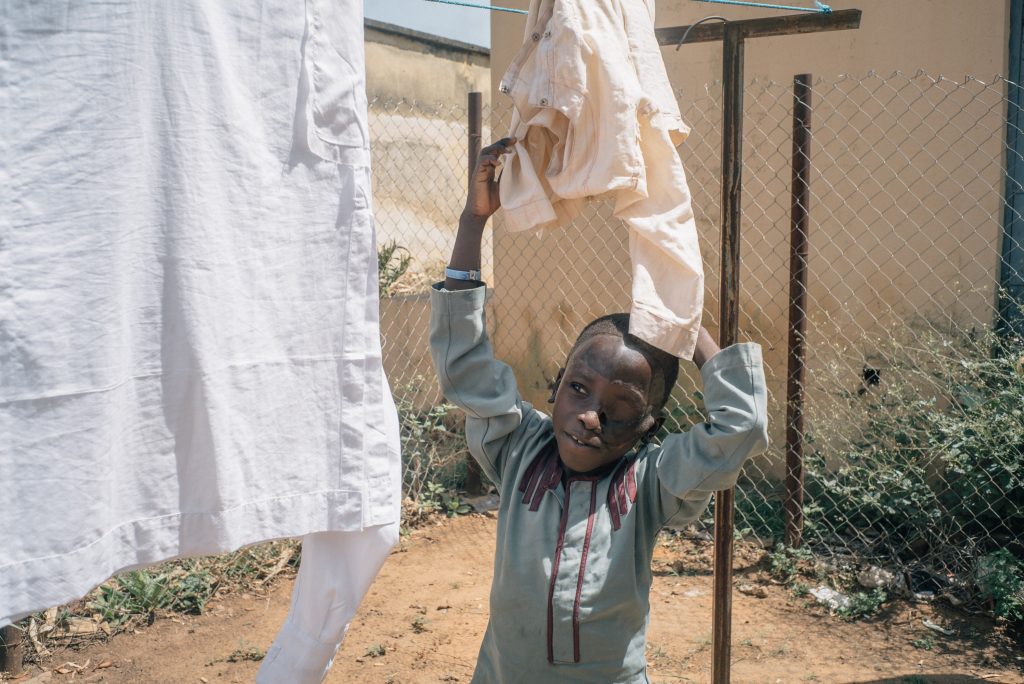/ SURVIVING NOMA
A SHORT DOCUMENTARY TO RAISE AWARENESS
This short film has been selected in 2020 for the inaugural Health for All film festival organised by the World Health Organization. It's available on YouTube, including to be embedded on external websites, with subtitles in 9 languages: Arabic, Chinese, Czech, English, French, German, Korean, Russian and Spanish.
/ HADIZA
Seven years for a new face
“I called and called to check if the foreign doctors the radio was talking about were coming to Sokoto to perform surgeries for people with my condition. They told me they were not sure of the date, so I just decided to go to the hospital and luckily they arrived soon after. I told them I wouldn’t leave without my surgery. I had waited too long for it.”
With noma, people will definitely look at you. Even your brother will discriminate against you.
Forty-year-old Hadiza, learnt this persistence from her father. He took her from hospital to hospital when she contracted noma at a very early age. They travelled across most of north western Nigeria looking for a cure. The only life Hadiza remembers is a life with noma.
Once she discovered Sokoto Noma Hospital, she still had to wait seven years, until her third visit to the hospital, to finally get her long-awaited surgery – the first of three procedures. “There was nobody in my town with this condition but in the hospital I realised I was not alone in the world.” she says.
“With noma, people will definitely look at you. Even your brother will discriminate against you. But I tell other people with noma to be patient, even when people laugh at them. Noma is a disease that can be fixed.” Hadiza says that she is a happy woman now, “Of course, I’m not like before, but I’ve finally been treated.”

When you sit close to someone you notice the look on their face, you notice that they are thinking: ‘Oh, she is not a human being!’
Fatima, aged 25.
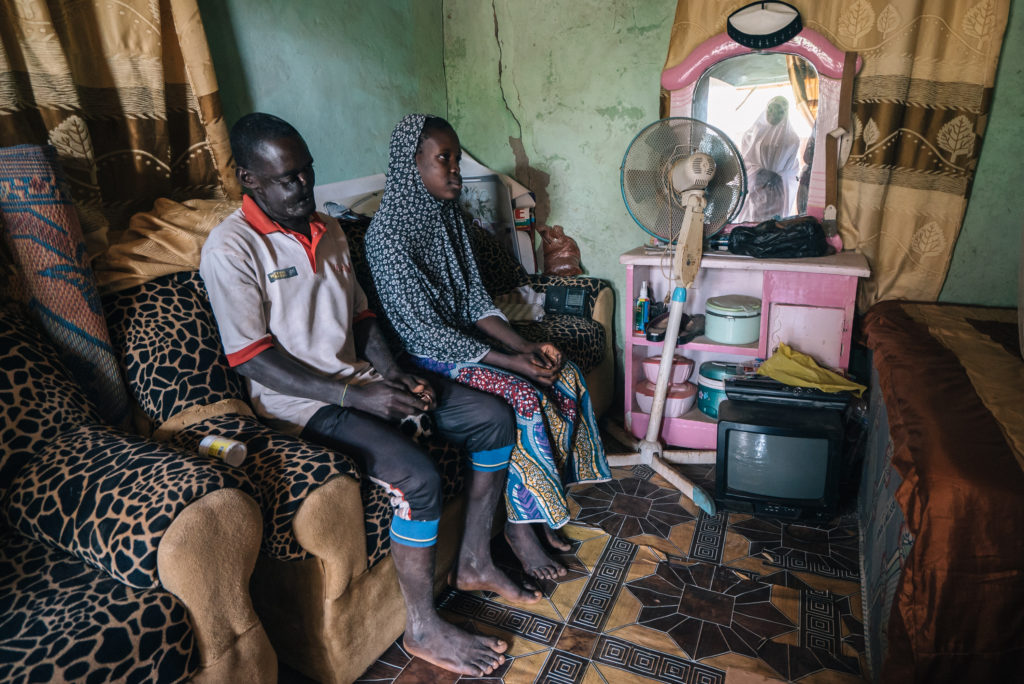
When you sit close to someone you notice the look on their face, you notice that they are thinking: ‘Oh, she is not a human being!’
Fatima, aged 25.
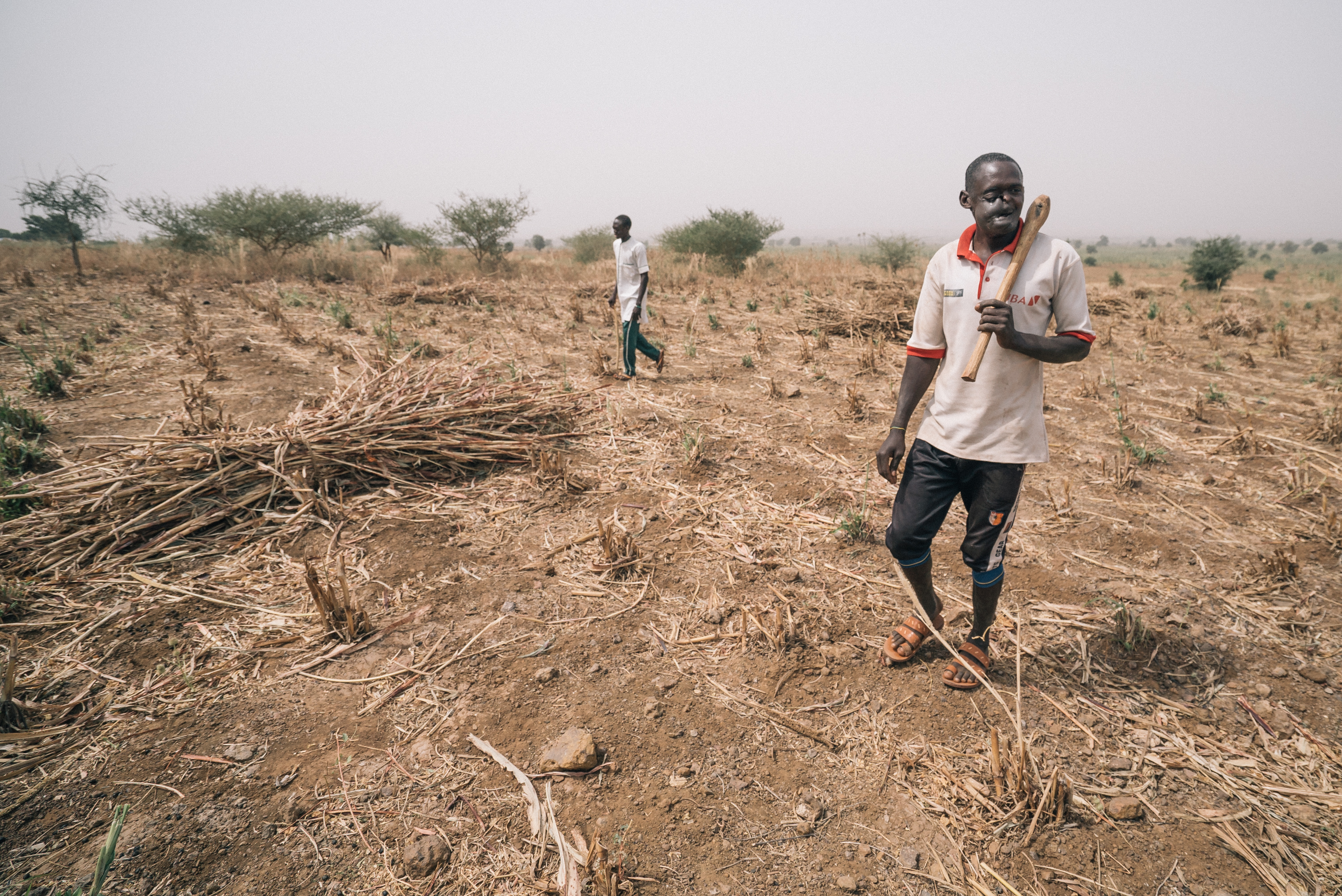
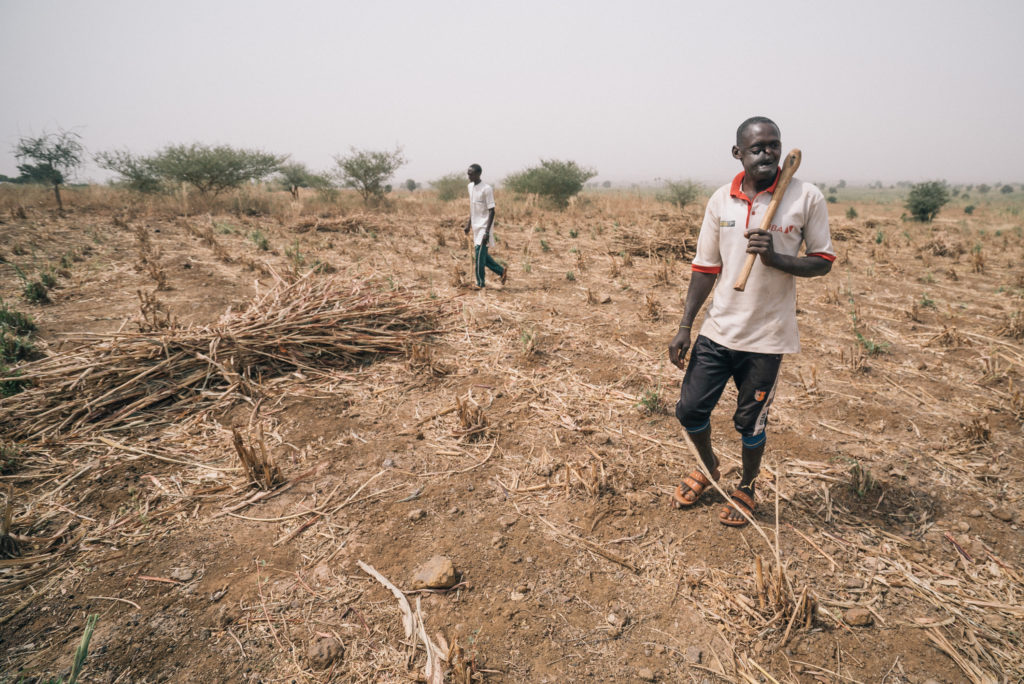
/ FATIMA AND DAHIRU
Two lives linked by noma
An outreach team from Sokoto Noma Hospital found Dahiru in a village in Niger state, Nigeria, when he was a teenager. He was brought to the hospital where he underwent multiple surgeries to repair the disfiguring injuries to his face.
Dahiru continues to spend a lot of time in the hospital: he is now part of the cleaning team, and he also washes the cars of the staff. His other job is taking care of a farm on the outskirts of Sokoto.
Fatima arrived at the hospital in 1999 when she was five-years-old. She stayed there alone for weeks, without her family, until she was operated on. She returned several times over the next few years to undergo more surgeries and to receive follow-up care. She hoped to get married one day, but it can be difficult to find a partner when you have noma.
"Those who are healthy get married much sooner; those who are sick are left behind. It’s difficult to find a partner for someone like us. That's what happens." said Fatima. "When you sit close to someone you notice the look on their face, you notice they are thinking, ‘Oh, she is not a human being!’”
Dahiru and Fatima met at the Sokoto Noma Hospital. The couple lived together in an isolated area, in a house almost camouflaged among the dry, ochre-coloured landscape. There, Fatima spent her days in solitude, with occasional visits from her neighbours and their children. She loved children and often shared her Hausa cooking with them.
Fatima died in March 2018 during the birth of her twins, who luckily survived. In the months leading up to her death, she had been feeling very weak and even the smallest tasks were extremely difficult.
Neither Fatima nor Dahiru liked to talk about noma, even though the disease coloured every aspect of their lives. The files and photos in Fatima and Dahiru's admissions forms can still be found in the hospital archives: they were just two children affected by the same disease.

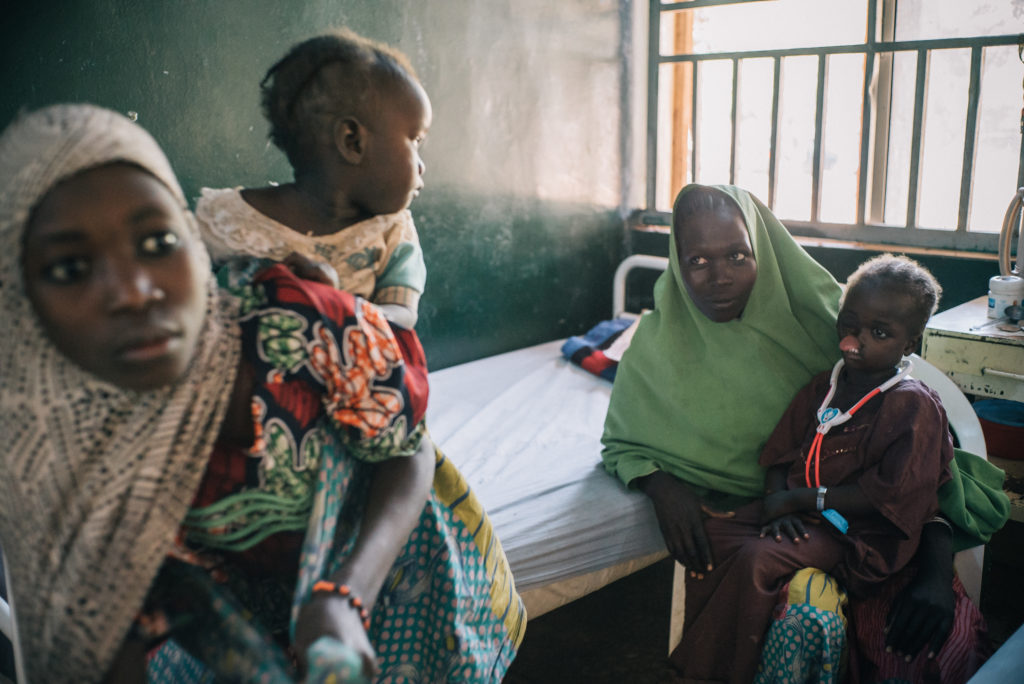
/ Yaashe
The long trip from Borno to Sokoto
Yaashe is six-years-old and arrived in the Sokoto Noma Hospital with her mother, Yagana, and her two siblings, Fatima and Falmata. The family is from Borno state, more than 1,000 kilometres from Sokoto. They had been living in Muna camp in Maiduguri, the capital of Borno state, after their town was attacked by Boko Haram. Armed men killed her father while they were sleeping. Yagana was lying by her husband’s side when he died.
She fled with her five children and found refuge in Maiduguri. Two months later, Yaashe contracted noma and an MSF doctor referred the family to the hospital in Sokoto.
Yaashe was a healthy and happy girl, but then suddenly she got a fever and after just three days she developed a hole in her face.
“As soon as Yaashe gets better, we will go back to Maiduguri,” says Yagana. “I have my two other children waiting for me there. Everybody is a refugee in the city, but we can’t go back to our home town because there is no peace. Boko Haram still controls the place.”
Little Yaashe finally received surgery six months after arriving at the hospital. It’s the first of several operations she needs because of the severity of her injuries.
“Yaashe was a healthy and happy girl, but then suddenly she got a fever and after just three days she developed a hole in her face. When I saw her coming out of surgery, I thanked God. I love her very much. She has my mother’s name, who passed away around the same time Yaashe got sick.”
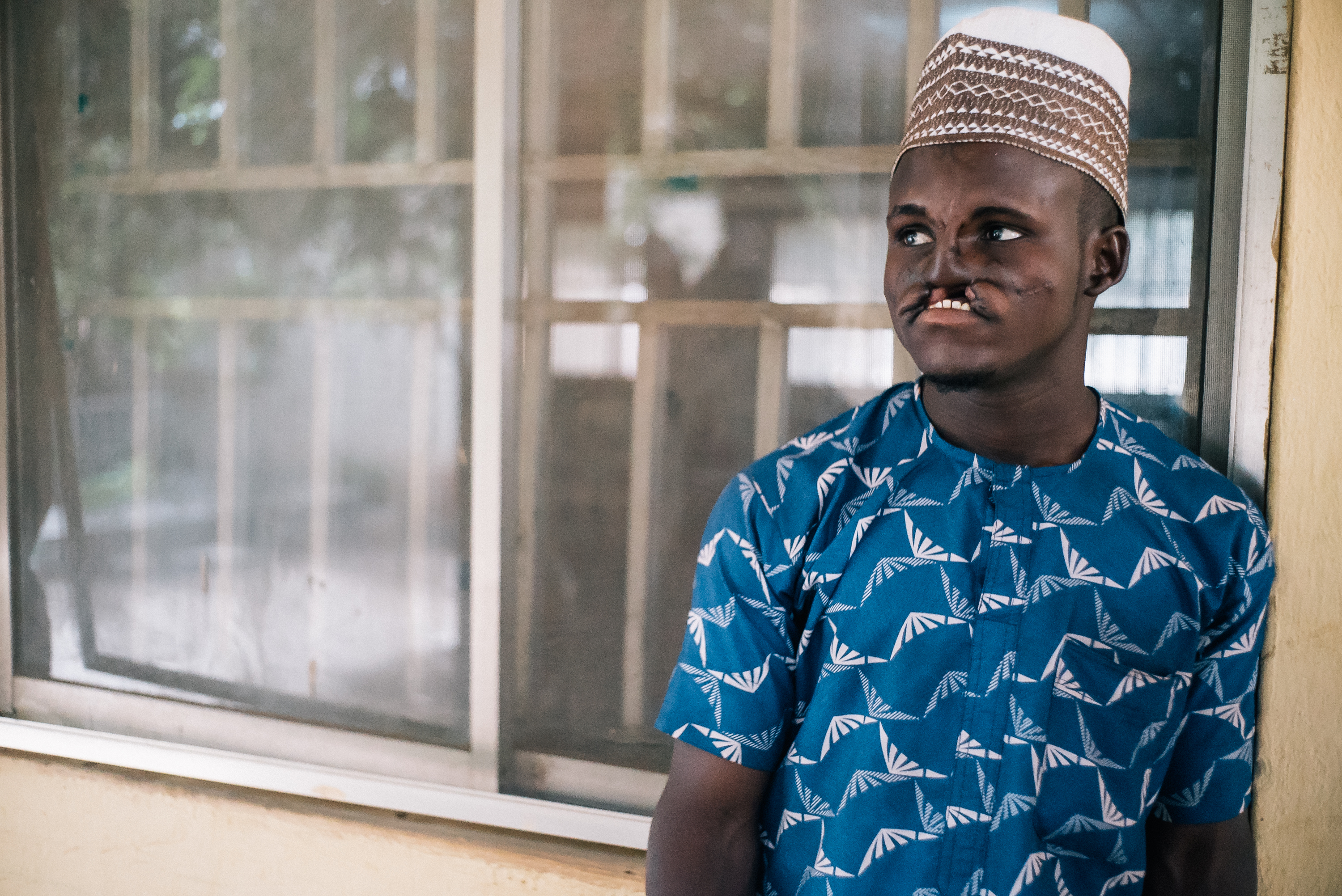
I thought I was the only one with this disease, but then I came to the hospital and saw others in my situation. It was a relief.
Bilya, 20-years-old.
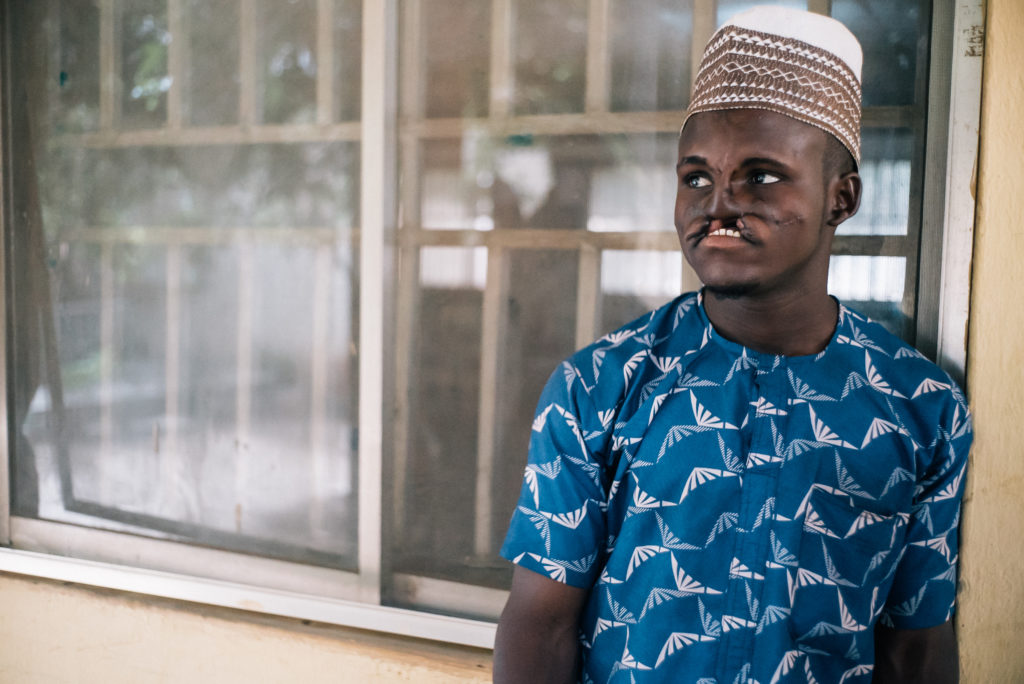
I thought I was the only one with this disease, but then I came to the hospital and saw others in my situation. It was a relief.
Bilya, 20-years-old.
/ BILYA
Advocating for noma prevention
Noma destroyed Bilya’s nose and upper lip in just a few weeks. Nobody in his town knew what was wrong with him, “I got noma when I was just one year old. Some people would run away when they saw my face. They didn’t consider me to be human."
One day, while he was buying his lunch in Sokoto town market after a morning at school, a man approached him and told him about a hospital that treated people with his condition. “I thought I was the only person with this disease, but then I came to the hospital and saw others in my situation. It was a relief.” Soon after his 20th birthday, after his first surgery, Bilya returned to his town near the border with Niger. His mother and his three brothers didn’t recognise him. “My mum cried because I have my nose again.”
Bilya plans to get married after the next rainy season and now he has a new job he likes: informing everyone back home about noma so that they can identify a case when they see it. “If a little boy’s gum has turned red they should send him to the hospital for treatment. I’ve distributed pictures so they know what noma is.”
/ UMAR
Noma, a disease that affects the whole family
His cheekbone became infected, and the disease finally spread to his eye. He couldn’t play with other children anymore.
Umar lies in bed the day after undergoing reconstructive surgery. He is in pain but tries to forget it by playing with a little toy guitar that the MSF counsellor gave him. His eye was too damaged by noma to be saved, but the surgeons were able to close his facial wounds.
Umar is eight years old and a quiet boy who often plays alone. His 18-year-old uncle Zakariyau has been staying with him in the hospital. He tries his best to support Umar, who has lost half his face to noma. “It started one year ago , when Umar had toothache. He was given traditional medicine, but then his cheekbone became infected, and the disease finally spread to his eye. He couldn’t play with other children anymore,” says Zakariyau.
Umar’s father, who calls him every day and took care of him during Umar’s first visit, couldn’t come to the hospital with him this time. It’s harvesting season. Umar’s mother was busy too: she has just delivered a baby girl at home.
Footnotes: Drawings & infographics by Chloé Fournier / Pictures & Videos by Claire Jeantet & Fabrice Caterini © Inediz - All rights reserved
